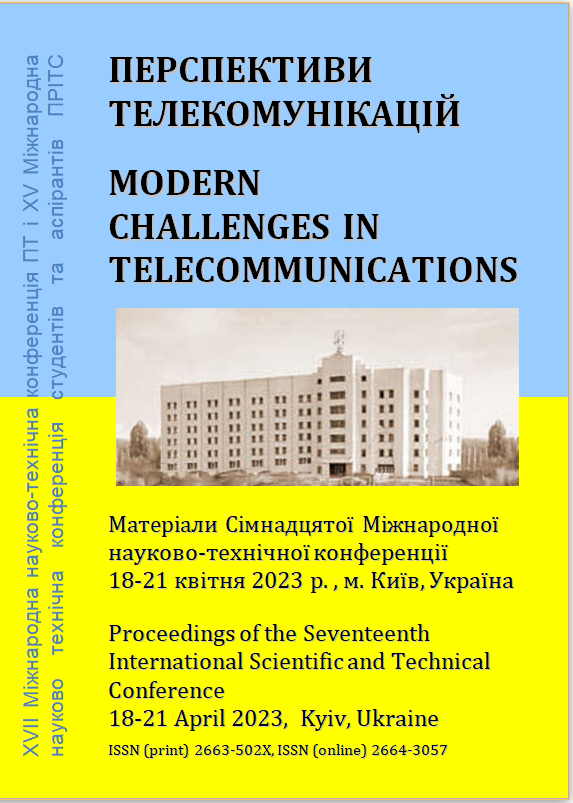ДЕТЕКТОР СТОХАСТИЧНИХ СИГНАЛІВ
Анотація
Через стрімкий розвиток радіосистем із використанням технології програмно-визначеного радіо з’явилася можливість формувати сигнали практично будь-якої форми. Даний факт призводить до ускладнення радіоелектронної обстановки і стимулює теоретичні та практичні дослідження щодо удосконалення методів та алгоритмів виявлення стохастичних сигналів. При невідомій структурі сигналу найбільш доцільно розробляти модифікації енергетичного детектора. Такий підхід забезпечить швидке оцінювання зайнятості частотного каналу для систем когнітивного радіо.Посилання
Liang Y.-C. Dynamic Spectrum Management. From Cognitive Radio to Blockchain and Artificial Intelligence. Springer, 2020. 180 р.
Elmasry F. G. Dynamic Spectrum Access Decisions. Local, Distributed, Centralized, and Hybrid Designs. JohnWiley & Sons Ltd., 2021. 728 p.
Captain K. M., Joshi M. V. Spectrum Sensing for Cognitive Radio. Fundamentals and Applications. CRC Press. 2022. 256 p.
Kay S. M. Fundamentals of Statistical Signal Processing: Practical Algorithm Development. New York: Prentice Hall, 2013. 475 p.
Zar J. H. Approximations for the Percentage Points of the Chi-Squared Distribution. Journal of the Royal Statistical Society. Series C (Applied Statistics). Vol. 27, No. 3, 1978. pp. 280-290.
##submission.downloads##
Опубліковано
Як цитувати
Номер
Розділ
Ліцензія

Ця робота ліцензується відповідно до Creative Commons Attribution 4.0 International License.
Authors who submit to this conference agree to the following terms:a) Authors retain copyright over their work, while allowing the conference to place this unpublished work under a Creative Commons Attribution License, which allows others to freely access, use, and share the work, with an acknowledgement of the work's authorship and its initial presentation at this conference.
b) Authors are able to waive the terms of the CC license and enter into separate, additional contractual arrangements for the non-exclusive distribution and subsequent publication of this work (e.g., publish a revised version in a journal, post it to an institutional repository or publish it in a book), with an acknowledgement of its initial presentation at this conference.
c) In addition, authors are encouraged to post and share their work online (e.g., in institutional repositories or on their website) at any point before and after the conference.

